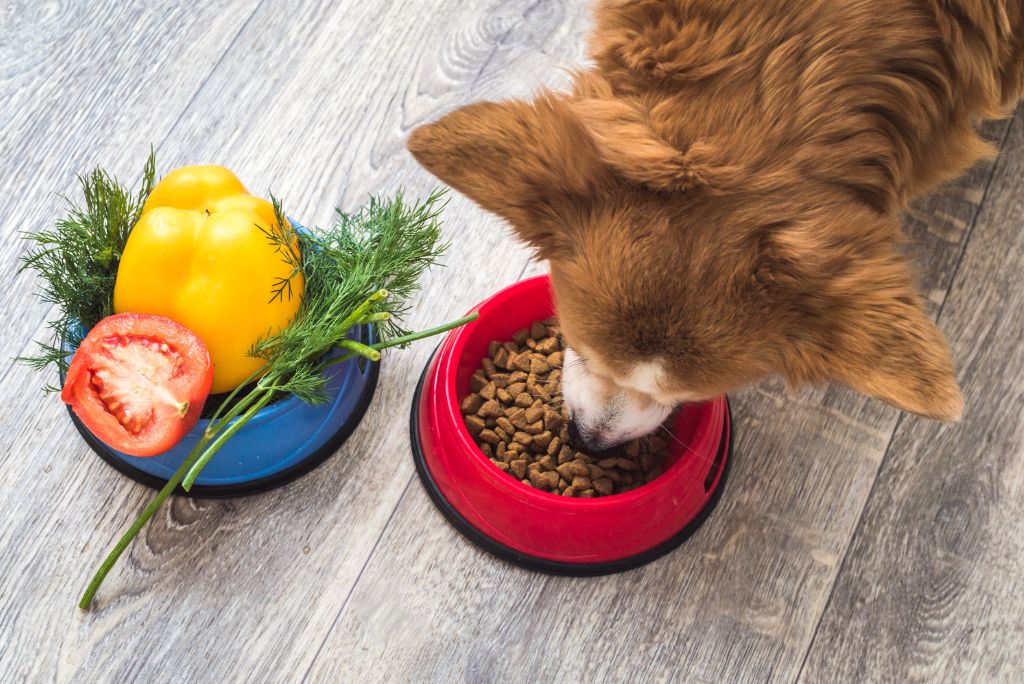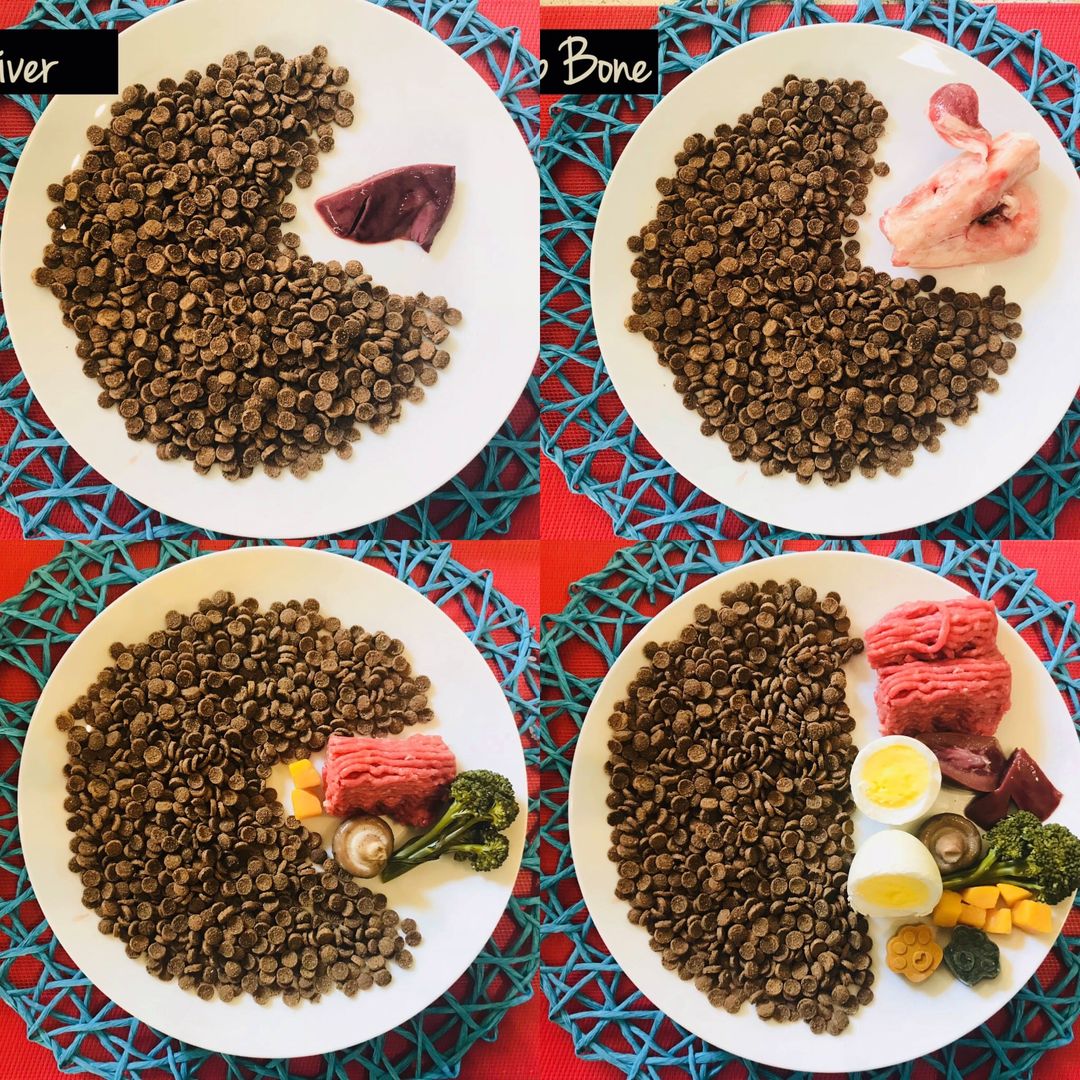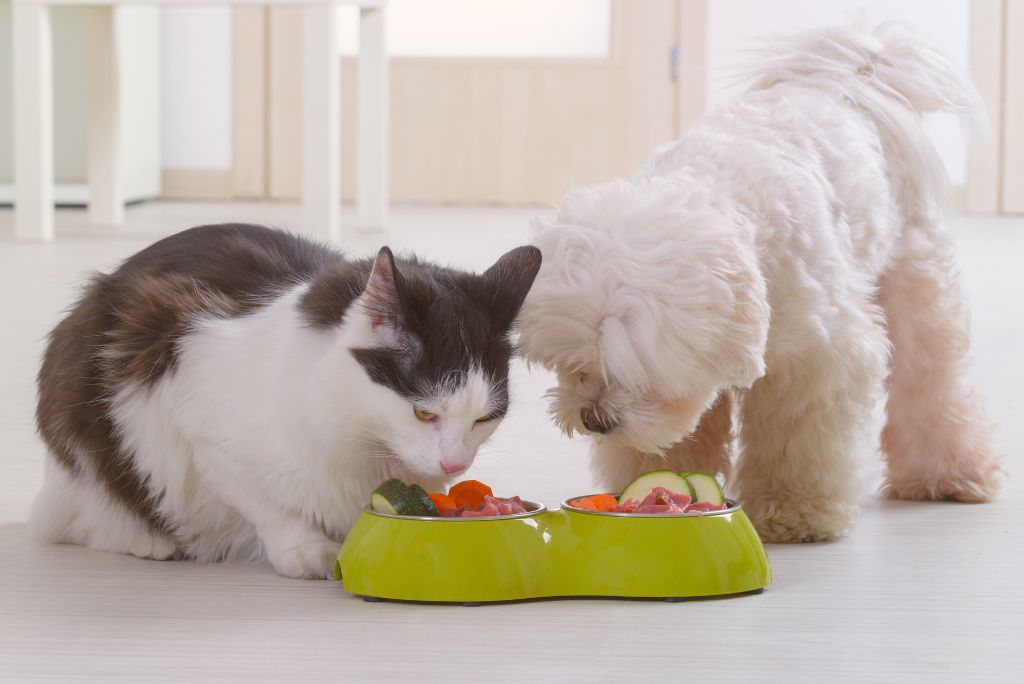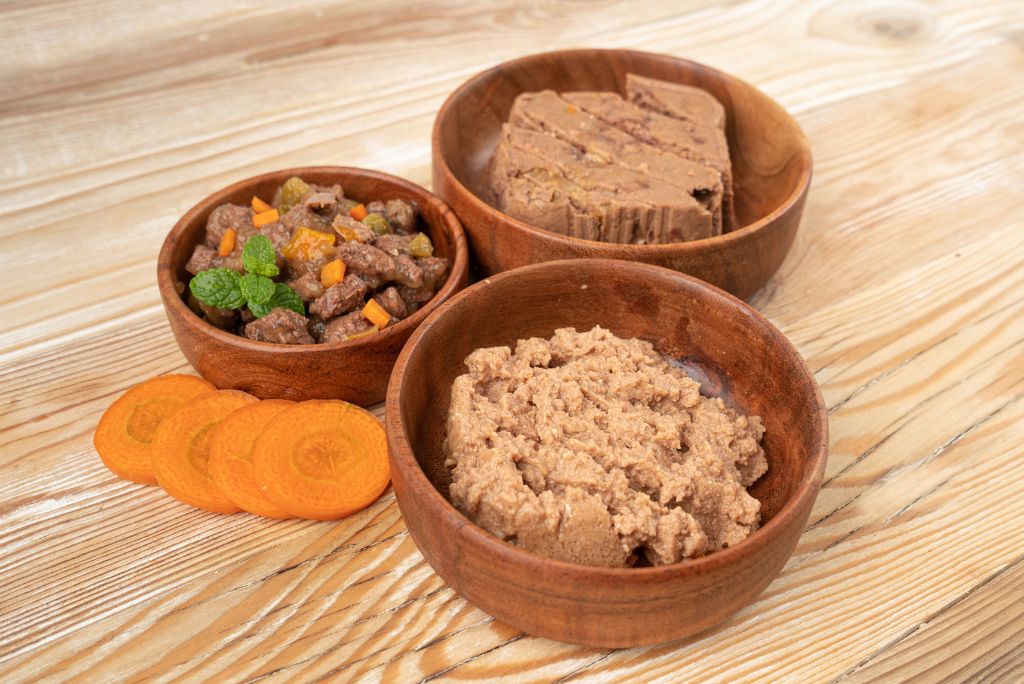
What You Need to Know About Hybrid Feeding and Raw Feeding
As pet parents, we want to make sure our pets are receiving the best possible nutrition. But what foods are actually best for our pets? What is raw feeding? And can a hybrid diet for pets lead to better overall health and wellbeing?
There are many different ideas floating around about what diets are best for pets, and we are here to unravel some of the mystery and make feeding your pets both easy and uncomplicated.
Here at World 4 Pets, we offer a wide range of professional high-quality pet foods, quality meats and bones, raw food add-ins, supplements and our specialised BARF blends; full of fresh raw goodness.
In this blog we will take a look at the pros of raw pet food and hybrid feeding, what they are, what foods to include in your pet’s diet, as well as how to tailor this style of diet to your pet’s individual species and breed.
What is hybrid feeding?
Hybrid feeding is a commonly practised amongst pet owners as a way of giving your animal the best of both worlds. This diet involves feeding your pet a mix of both fresh and dry foods, giving them a combination of textures and being able to bulk their dinners out if needed. This type of feeding can be particularly effective for those wanting to keep their pet’s meals interesting but also wallet-friendly. A hybrid diet is also the starting point if you wish to transition your pet to a 100% raw feeding diet.
Not only can hybrid feeding make for a more stimulating mealtime for your pet, it can also be a great option for fussy eaters. Just like hiding vegetables in a child’s mac and cheese, adding a whole mix of things into a bowl together concealed with all sorts of flavours can encourage less eager animals to eat - and enjoy - their food.
The way to start hybrid feeding is to remove 10% of your pet’s dry food/kibble and replace it with raw food (it can also be lightly cooked). You may choose to stay at this level forever however for those looking to feed a hybrid diet permanently, it is recommended that a minimum of 20% of the diet is made up of fresh foods. Starting with a bland meat such as chicken or turkey (without bones) will minimise the risk of an upset tummy.
However please note: changing your pet’s diet too suddenly can cause some digestive distress, as well as possibly putting your dog off their food altogether. The rule of thumb, if you want to transition your pet to a hybrid diet, is to gradually introduce new foods and see how they react to them, adding or taking away as needed.

Raw feeding for pets
If you are considering a raw diet for your cat or dog, you’ve come to the right place for guidance on the essential steps to make this switch. But first, to explain what raw feeding is…
Raw feeding does what the name implies; it involves feeding your pet on raw ingredients, usually meat, offal and bones, with the addition of other ingredients such as fruits and vegetables, raw goat milk and eggs, as well as other animal-safe supplements.
Feeding your animal raw foods can be a great diet switch if done correctly and safely. Raw foods are easiest for animals to digest, meaning fewer tummy upsets and digestive issues. It is full of naturally-occuring vitamins and minerals that promote good health in cats and dogs, as well as being an excellent source of hydration due to a higher moisture content.
Raw feeding might be a great option for dogs with considerable allergies or intolerances, as these natural foods are much less likely to spark an allergic reaction compared with processed pet food.

How to transition to raw feeding
Put simply, slow and steady wins the race. Sudden and drastic changes to your pet’s diet can lead to digestive issues while their body tries to process the new types of food that they’re not used to. Not only this, if your animal companion is a little more fussy, you may find they turn their nose up completely at dinner time if they suddenly have a completely different diet.
We recommend gradually adding in more raw elements to your dog’s usual meals, over the course of a week minimum, to gently get them used to this new food. Through this time you will get to know what your pet does or doesn’t like, if any of the foods upset their stomach and whether they seem to be genuinely enjoying their meals.

If you have a particularly sensitive, fussy or anxious pet, change can be a big deal for them, and so the more gradual the transition the easier it will be for both them and you.
Each animal is completely unique, and so finding the best raw diet for your individual animal can be a process of trial and elimination. But with gentle encouragement and attentiveness to your pet’s likes and dislikes, it can be a hugely beneficial step for their health.
BARF diet - what is it and why do it?
BARF may be a slightly unfortunate acronym, however it actually stands for Biologically Appropriate Raw Food Diet, and if executed well comes with a whole host of health benefits for both dogs and cats alike:
BARF diet for dogs
When it comes to creating the best BARF diet for dogs, it is going to be pretty meat-heavy. The stars of the show here are meat, organs and bones, with the addition of certain dog-safe fruits and vegetables. BARF diets are full of goddess, with high-quality protein from the meat, numerous naturally occurring vitamins and minerals, more hydration than your average pet food, and even aiding in dental health - crunchy bones and veg will see to that!
BARF diets can likewise promote good weight maintenance, often helping dogs become leaner or more muscular, and have also been shown to improve the condition of their skin and coat.
We offer BARF blends suitable for both adult dogs and puppies, boasting the freshest ingredients, many of which are locally sourced and all our mixes are prepared in-house.

BARF diet for cats
If you are considering a BARF diet for your cat, it should essentially be inspired by what they would naturally eat in the wild before domestication. Cats love meat the same as dogs do, so the addition of good quality protein as well as additional organs are an excellent base for a feline BARF diet.
The majority of the diet will be animal-focused, with plant-based or additional nutritious add-ins or supplements making up a much smaller percentage of meals. However, cats are known to be a little more fussy than dogs and don’t always take well to change, so implementing a BARF diet may take a little longer than it would with a dog.
Cats who follow a BARF diet have been shown to have better digestion, healthier bowel movements, fewer allergies and parasites, as well as a more supported immune system, muscle maintenance and a shinier coat.

The Key Takeaways
If you’re feeling confident that a totally BARF diet is the best solution for your pet’s wellbeing, why not take a look at our wide range of raw foods, BARF mixes and supplements today to find the best products for your pet and get them started on their raw diet journey.
However, if you still feel uncertain about taking such a big leap, a hybrid diet is a great option that acts more as a stepping stone between a completely commercial pet food diet versus a complete BARF pet food diet. In a way, it’s the best of both worlds.
If you’d like our recommendations or help with tailoring your pet’s diet, please feel free to reach out. Our team will be more than happy to suggest possible solutions for your beloved animal companion’s needs!
